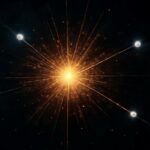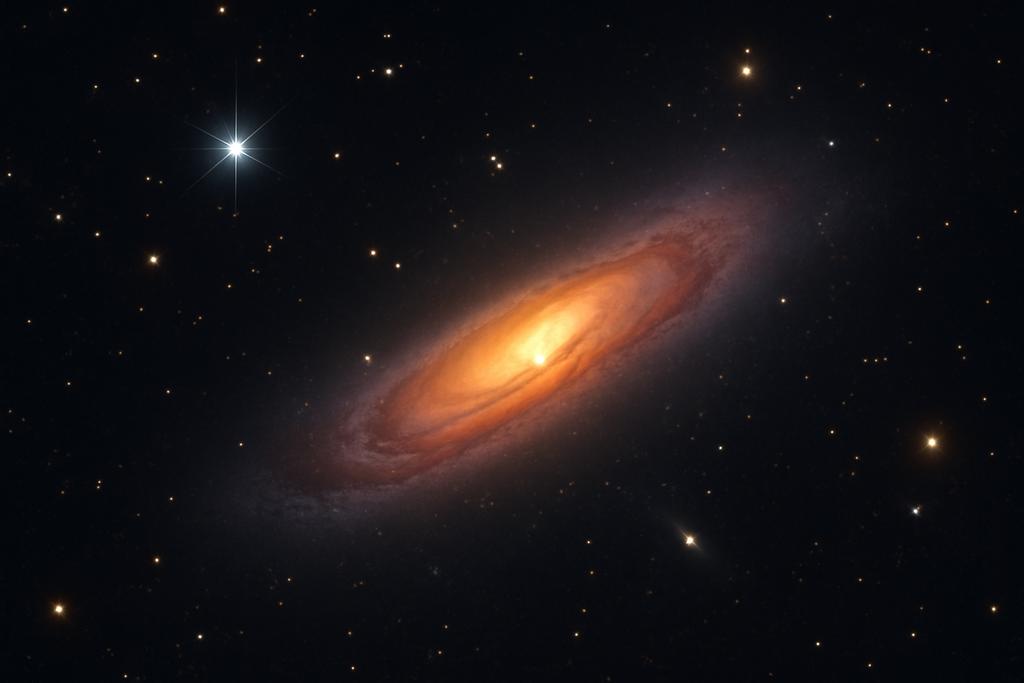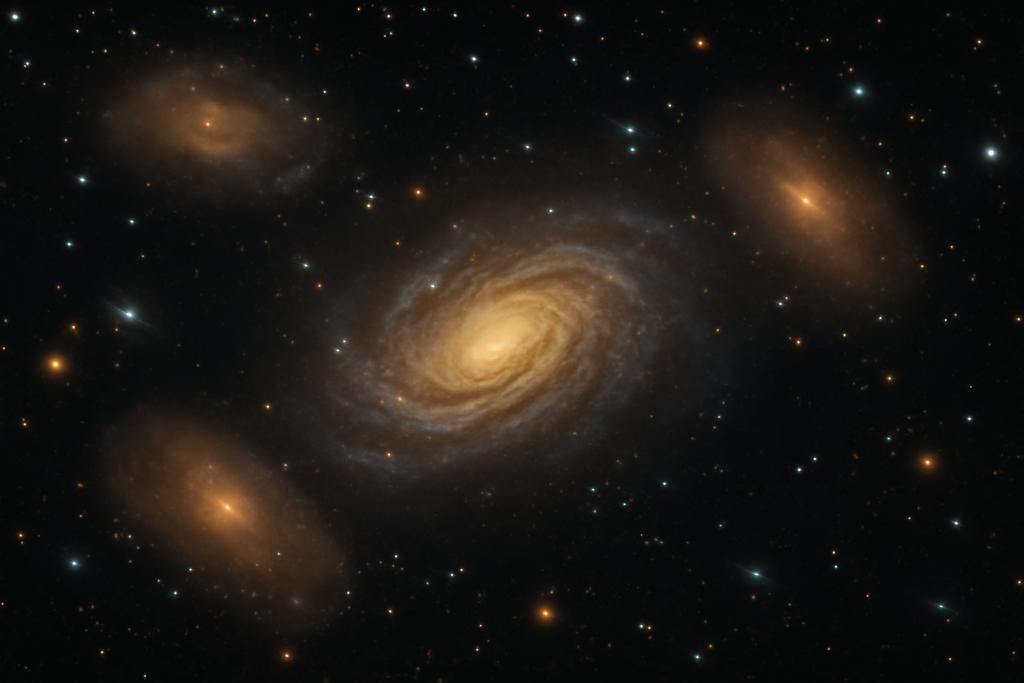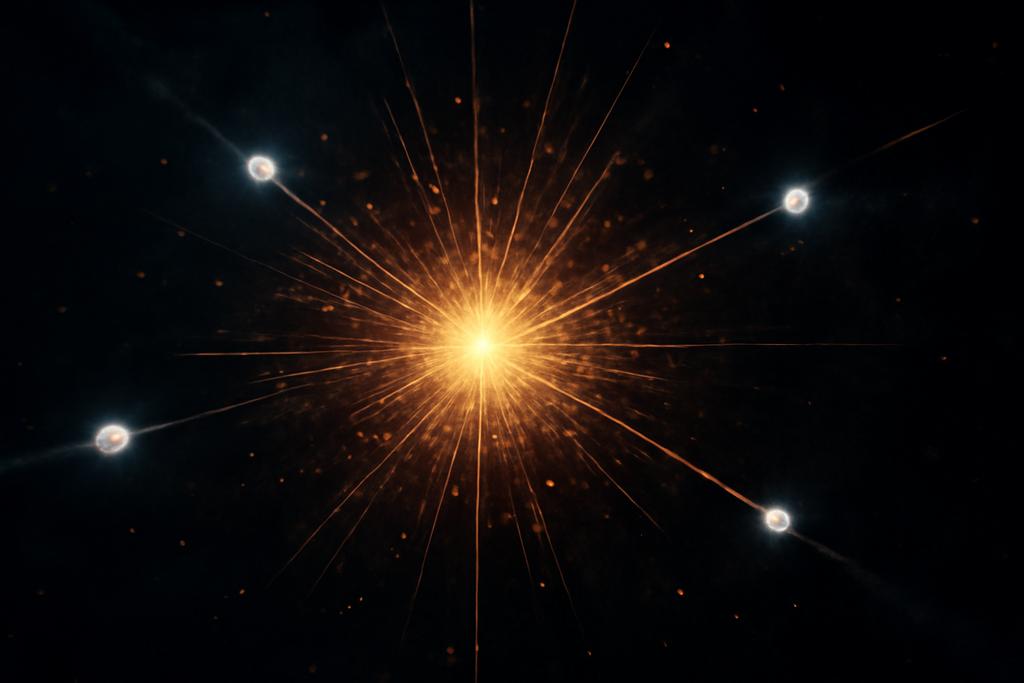The cosmos is a vast relay race where the past trails behind the present in the form of light and gravity. The cosmic microwave background (CMB) is the oldest relay baton, a whisper of the universe when it was barely 380,000 years old. Lensing maps from Planck and other ground-based experiments crowd the track with the gravity of everything that has happened since, bending the paths of photons as they travel across billions of years. Now, a team led by Lawrence Berkeley National Laboratory researchers has linked that ancient whisper to a modern census of quasars from DESI, carting out a three-dimensional record of how matter grew across a large slice of cosmic time. The result is a precise, high redshift measurement of how clumpy the universe has become, and a novel route to pin down the Hubble constant without leaning on the sound horizon.
The study was conducted by researchers at Lawrence Berkeley National Laboratory (LBNL) and collaborators across DESI, with the first authors R. de Belsunce and A. Krolewski leading the charge. The work also reflects the global collaboration behind DESI, drawing in teams from the University of Waterloo, the Institute of Astronomy at Cambridge, and many more universities and national laboratories. In short, this is a joint effort to fuse two powerful ways of weighing the cosmos: the ancient light that has traveled to us and the light from objects that have lit up across time, all interpreted through careful statistics and simulation. The payoff is a richer map of how the universe’s scaffolding—galaxies, gas, dark matter—has assembled from once nearly uniform fluctuations into the sprawling cosmic web we inhabit today.
Tomography Across Time
To see the growth of structure as it unfolds, the team used a technique called CMB lensing tomography. CMB lensing is like a cosmic X-ray that reveals the total mass—visible and invisible—that light has passed through on its way to us. But because the lensing signal is a projection of mass along the entire line of sight, you only get a single, blended picture unless you can separate contributions from different epochs. Tomography does just that by slicing the data into redshift bins, effectively building a time-lapsed movie of the universe’s density field.
In this study, the quasar maps from DESI DR1 were split into three redshift bins covering 0.8 to 3.5, with effective redshifts around 1.44, 2.27, and 2.75. Each bin behaves as a tracer of the matter that existed when the universe was younger. The Planck PR4 CMB lensing maps were then cross-correlated with these three quasar slices, and the cross-spectra and auto-spectra were analyzed together. The triad of redshift slices overlaps meaningfully with the Planck lensing kernel, which is the weighting function that tells you how sensitive the lensing signal is to structures at different distances. The result is a measurement of how strongly matter has clustered—the amplitude parameter σ8 and its combination with the matter density, S8—in a regime where gravity has been the dominant sculptor of cosmic structure.
Cross-correlations like these are especially powerful because they help disentangle two long-standing challenges. On one hand, galaxies and quasars are biased tracers of the underlying matter; their distribution doesn’t map one-to-one to dark matter. On the other hand, the growth of structure leaves a signature that depends on both the matter content of the universe and the strength of gravity. By correlating a mass map from CMB lensing with a high-fidelity, spectroscopically confirmed quasar census, the researchers could tease apart how much of the signal came from how fast structures grew versus how bright the tracer is to gravity’s pull. The result is a handle on the growth history of the universe that uses the high redshift universe as a new lever arm, well beyond what many galaxy surveys probe today.
Quasars Meet Cosmic Lenses
DESI’s quasar catalog in DR1 is one of the densest, most carefully vetted maps of high redshift structure ever assembled. The study combined more than 1.2 million spectroscopically confirmed quasars across roughly 7,200 square degrees of sky with the Planck PR4 CMB lensing maps. That vast dataset let the team perform a tomographic analysis in three bins, with z ranges chosen to maximize overlap with the CMB lensing kernel and to push into the matter-dominated era of the universe’s history.
When the trio of redshift bins is analyzed together, the cross-correlation signal between Planck’s lensing map and the quasar distribution is detected at a stunning level of SNR 21.7, while the quasar auto-correlation by itself reaches SNR 27.2. In other words, the sky is whispering back in two complementary ways: the gravitational potential the photons navigated along the way to us (the lensing signal) and the distribution of the luminous tracers that mapped the large-scale structure (the quasar signal). The joint analysis of all three bins lets the authors constrain the amplitude of matter fluctuations during the era when gravity was building the cosmic web most rapidly, across a broad swath of cosmic time.
The core numbers tell a coherent story. The joint tomographic analysis yields a measurement of the amplitude of matter fluctuations in the matter-dominated regime of the universe as σ8 ≈ 0.93 with uncertainty that keeps it comfortably within the same ballpark as the Planck-inferred ΛCDM predictions, yet it sits a little higher than the ΛCDM fit to primary CMB data by Planck. When folded into S8, the combination that captures both the clustering amplitude and the matter density, the paper reports S8 ≈ 0.92 with uncertainties on the order of a few percent. In other words, at redshifts around 1 to 3, the growth of structure appears to be only mildly higher than what the standard cosmology would predict from the early universe’s conditions. The result is intriguing but not a smoking gun for a cosmic revolution—more a nudge that our picture of growth across time is shaping up as a consistent, testable narrative across multiple techniques.
Growth of Structure and the Hubble Constant
Beyond mapping how clumps of matter grew, the team pushed into two of the hottest questions in modern cosmology. First, the growth history itself: how does σ8 evolve with redshift, and how does S8 tie into the overall matter density of the universe? The analysis used a hybrid theoretical framework that combines non-linear power spectrum insights from N-body simulations with a perturbation theory extension that captures the subtle, non-linear behavior of biased tracers like quasars. In other words, the authors synthesized a practical toolkit that can handle both the messy, small-scale realities of clumpy matter and the large-scale patterns that keep their predictions honest.
Second, they leveraged the same data to attempt a model-independent route to the Hubble constant H0. By combining the CMB lensing auto-spectrum from Planck PR4 with ACT DR6 lensing data and the DESI quasar cross-correlations, they constructed a sound-horizon-free measurement of H0 that relies on the turnover of the matter power spectrum rather than the traditional standard ruler set by the sound horizon at recombination. The result lands around 69 km s−1 Mpc−1, with uncertainties of a few kilometers per second per megaparsec. This is broadly consistent with other late-time probes and with the idea that the universe’s expansion rate can be constrained by the way matter and radiation balance out over cosmic history, independent of the detailed physics of the early universe’s sound horizon.
The analysis shows how adding the quasar cross-correlations to the CMB lensing data helps break degeneracies that often haunt cosmological inferences. It is a win for multi-tracer cosmology: by letting different cosmic messengers speak in concert, we gain a more robust view of the growth of structure and of the universe’s expansion rate at late times.
What This Means for ΛCDM and the Road Ahead
The big current question in cosmology is whether the standard ΛCDM model continues to hold up when probed in fresh ways and at different times in the universe’s history. The DESI DR1 quasar cross-correlation with Planck CMB lensing finds no strong evidence for a breakdown of ΛCDM in the high redshift domain 0.8 < z < 3.5. The measured growth of structure sits only mildly above the Planck-based ΛCDM expectations, and the joint H0 estimate from the lensing cross-correlation plus CMB lensing data agrees broadly with the values favored by many late-time probes, sitting in the same neighborhood as other independent measurements and not in the most extreme tension camp.
That said, the authors quantify a small upward tilt in the growth amplitude relative to the primary CMB-based ΛCDM fit. In plain terms: the universe at redshift around 1.5 to 3 looks a touch clumpier than the earliest-universe blueprint would predict, but the difference is not dramatic given the current error bars. This is exactly the kind of result that excites cosmologists. It is a nudge toward re-examining assumptions, while also providing a cross-check against a wide range of independent probes. Crucially, the study demonstrates that pushing to higher redshifts with spectroscopic tracers and leveraging CMB lensing can tighten the screws on the growth history in a way that complementarily tests the something-old-and-true ΛCDM framework.
The methodology matters as much as the results. The paper blends a careful treatment of redshift space distortions, magnification bias, and non-linearities with a forward-looking modeling approach that straddles simulations and effective field theory. It also showcases the importance of meticulously controlling systematics, validating the pipeline on realistic mocks, and performing robustness checks across scale cuts and priors. The result is a credible, reproducible map of growth that future data can sharpen rather than overturn. And sharpen it will: the DESI survey is only entering a new phase with year five and beyond, promising far richer statistics and even tighter cross-checks with lensing maps from the ACT and Planck successors.
The Road Ahead
Looking forward, the combination of DESI with increasingly precise CMB lensing maps will push cosmology toward tighter, cleaner tests of gravity and the content of the cosmos. The current work confirms that high redshift is a valuable testing ground where we can stress-test the standard model with a new set of tools and a much larger and cleaner quasar sample. The next wave of data from DESI, along with improved CMB lensing from ACT DR6 and future missions, will reduce the uncertainties enough to reveal whether the slight excess in growth is a statistical fluctuation or a hint of new physics waiting to be discovered.
One of the most exciting takeaways is that the H0 measurement achieved here is impartial to the sound horizon. That independence is crucial because it adds a separate line of evidence to the current H0 conversation, which has hinged so far on either early-universe inferences or late-time distance ladders. If multiple, independent routes converge on similar numbers, the case for new physics to resolve the tension becomes stronger; if they keep diverging, the need for revised cosmology grows louder. Either way, cross-correlating DESI quasars with CMB lensing is moving cosmology from a two-branch debate to a multi-pronged interrogation of the universe’s past and its fate.
The study is a reminder that our cosmic map is still being drawn in remarkable ways. It sits at the intersection of observational ingenuity and theoretical resilience: a demonstration that high redshift is not just a distant rumor but a robust, data-rich frontier where the universe’s growth history can be charted with increasing clarity. The message from the high redshift universe is not a rebellion against ΛCDM, but a careful handshake with it, a confirmation that the basic script still fits, with perhaps a few lines worth tightening as data accumulate.
In the end, the universe continues to surprise in the best possible way: not with a verdict that overturns our theories, but with a cascade of sharper questions and better tools to answer them. The DESI quasar cross-correlation with Planck CMB lensing is a striking example of how far cosmology has come and how bright the road ahead can be when we listen to the cosmos from many angles at once.








